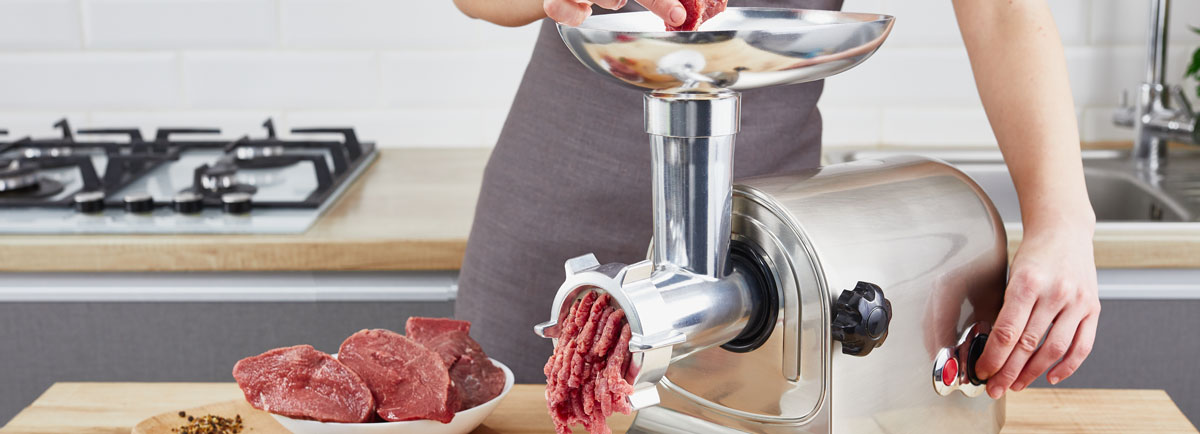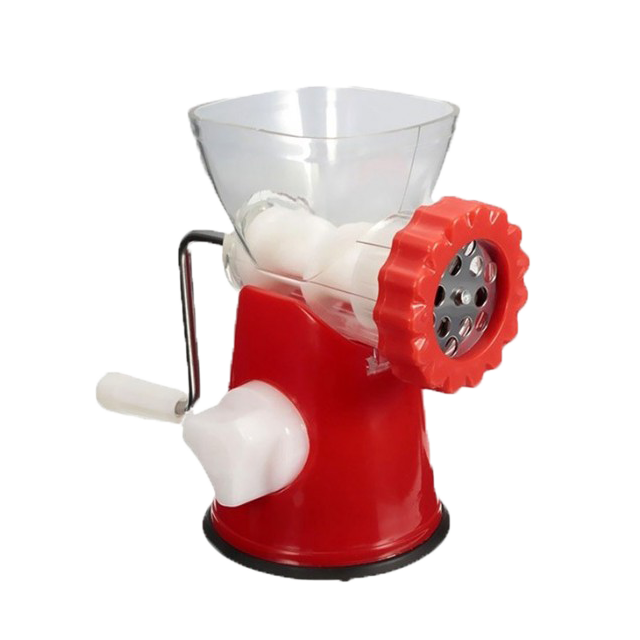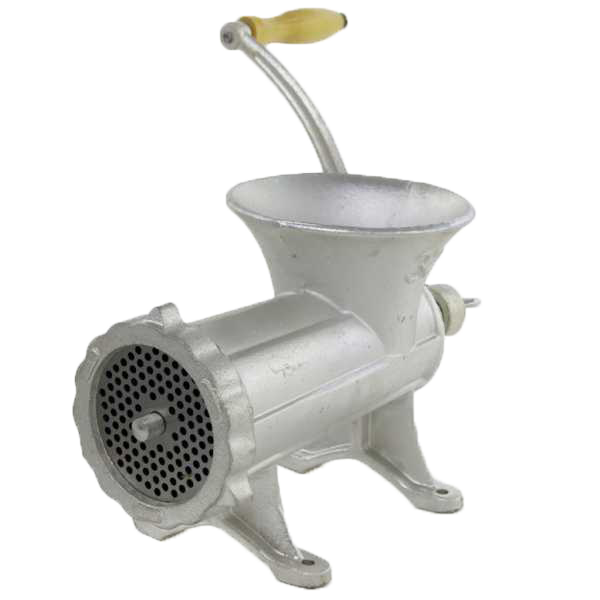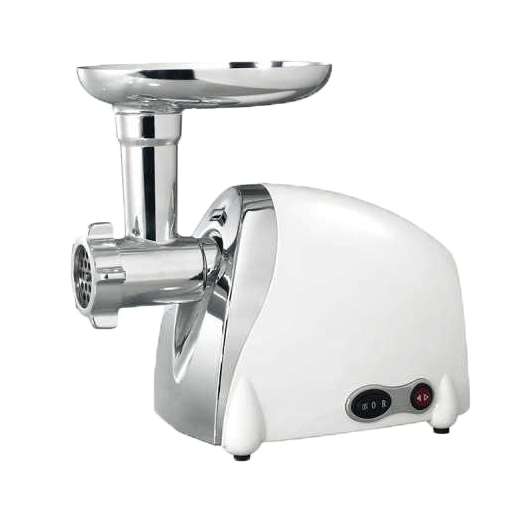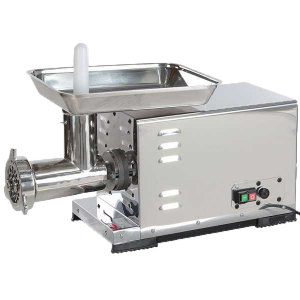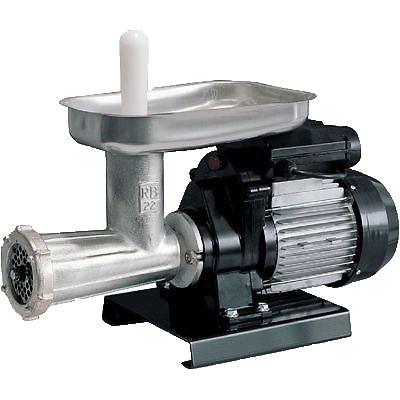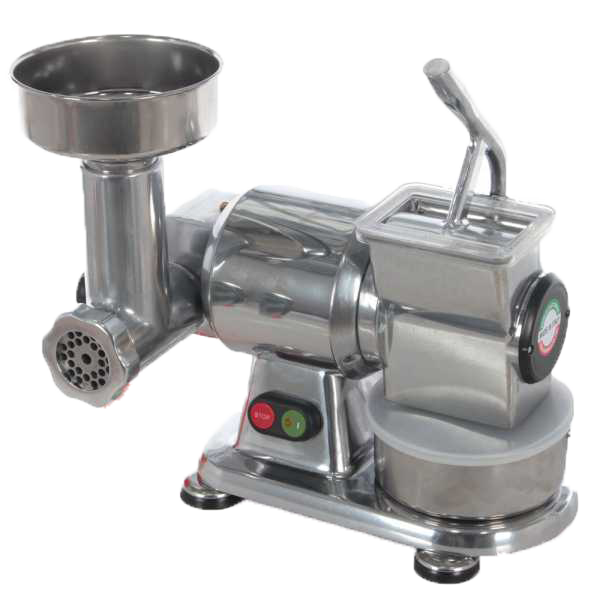A comprehensive guide to purchasing the best meat mincer, with all its features and types.
The Complete Guide to help you choose the Best Meat Mincer
by the Real Experts of Kitchen Equipment
The meat mincer is one of the most versatile kitchen tools on the market. Its main use is, of course, to grind meat to make sausages, hamburgers, meatballs and meatloaf; however, with the appropriate accessories fitted, meat mincers are very useful also in the preparation of pasta fillings, to make tomato sauce, to chop vegetables, etc. There are many different models of meat mincers, ranging from hobby models for limited, domestic use to more heavy-duty ones.
CONTENTS
1. What is a meat mincer?
A meat mincer is essentially a machine, electric or manual operated, that is used in the kitchen to process meat and reduce it into small, homogenous pieces. It allows for the domestic preparation of minced meat that can be used as the basic ingredient for many recipes. The meat mincer allows to grind various types of meat, lard and pork rind and obtain pieces of different sizes. The processed product can range from the largest pieces of meat to the finest ground meat simply by grinding it several times or by attaching a die plate with holes to the tool.
The meat mincer is a valuable ally for anyone who wants to try their hand in making sausages, meatballs, burgers or meat sauce.
In addition to the preparation of many recipes, the meat mincer gives the possibility to have always fresh and healthy products without the addition of additives or preserving agents, as is normally the case with industrially produced sausages. This tool allows several types of meat to be processed together, and can be mixed with other ingredients such as salt, pepper, garlic, herbs and spices.
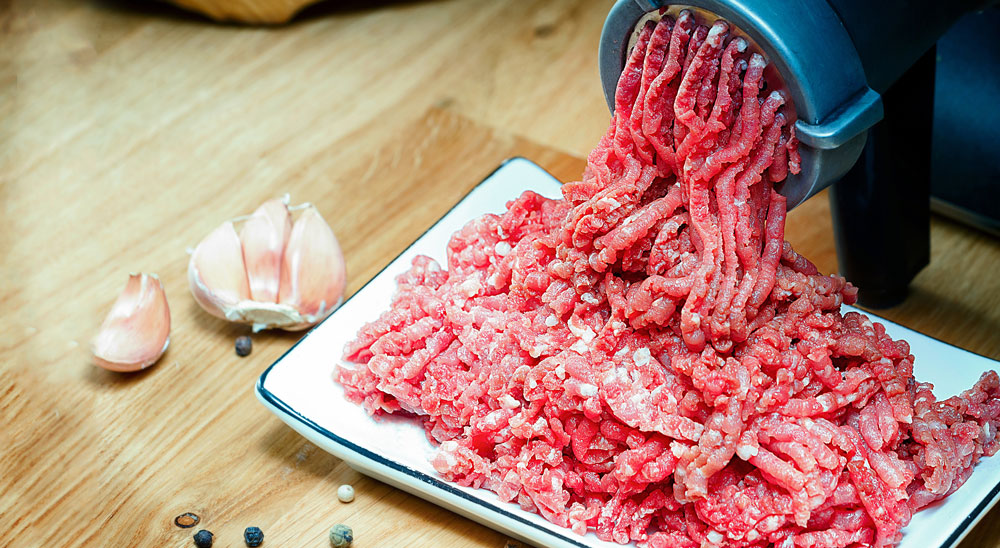
2. Why buy one?
With a meat mincer you can always have fresh, safe and quality food products. Of all foods, meat is the most prone to oxidation, resulting in a loss of its organoleptic characteristics and a lower overall quality of the meat itself. In minced meat, the spoilage process is more extensive and rapid because the piece of meat undergoes a transformation and gets processed into a “flatter, less solid” surface that comes into contact with air. When purchasing fresh minced meat, it should be borne in mind that it is a product that must be consumed as quickly as possible. This also applies to fresh sausages, burgers, meatballs and various by-products. Refrigeration is obviously essential but it will slow down, not stop, the oxidation process.
Meat mincers guarantee higher quality of the food to be eaten, as it is possible to select and grind a piece of meat of one’s choice to be used at the moment; this ensures that the organoleptic characteristics of the meat are intact and that the food product is safe. Many recipes can be prepared: homemade cured meats, always fresh meat sauces, meat, fish or vegetable balls, hamburgers, tomato sauce, homemade pasta, chopped vegetables, grated cheese and much more.
In addition, preparing minced meat at home saves a lot of money compared to buying ready-made meat mixtures or by-products.
3. Power supply
The meat mincer models on the market are divided into two large families: manual and electric. A manual meat mincer is essentially a machine suitable for strictly domestic and limited use. Among the electric models, on the other hand, it is possible to find small-sized and hobby-use meat mincers to more heavy-duty ones capable of processing even large quantities of meat.
Choosing a manual rather than an electric model, or vice versa, depends on the intended use and the user’s requirements, to be properly assessed before going ahead with the purchase. For example, there is certainly no point in buying a heavy-duty electric meat mincer if the use of ground meat in recipes is very little. On the other hand, restaurant or pub owners who want to prepare delicious hamburgers for their customers, will certainly need a heavy-duty, high-powered electric machine.
3.1 Manual meat mincers
The manual meat mincer is characterised by an essential design and is the most affordable type avaiable on the market. These models are also called “hand crank”, as the propeller that pushes the meat towards the blades is simply operated by a crank rotated by the user’s hand. When using a manual meat mincer, the piece of meat must be placed in the hopper plate/feed inlet of the machine with one hand and pushed down towards the blades inside the tool, while the other hand rotates the crank according to the desired force and the grinding speed the user wants to achieve.
Generally, hand crank models are equipped with a hole for the c-clamp to fix them to a table or other solid and stable support surface. Amongst the hand crank meat mincers there are models that are of a higher quality than others and this largely depends on the materials they are made of. Cast iron meat mincers are more reliable, durable and long-lasting and are usually made by the best brands such as Reber; manual meat mincers made of plastic or aluminium, on the other hand, are mainly suitable for very little use as they are more prone to breakage after a few uses.

Manual meat mincer in plastic 
Manual meat mincer in cast iron
3.2 Electric meat mincers
Electric meat mincers are naturally characterised by the presence of an electric motor, and also depending on the power of this motor, there are hobby-use models and heavy-duty models. Generally, the motor of a meat grinder is a single-phase electric motor (we will go into more detail about the motor later), therefore the machine should be connected to a normal 230 Volt power socket.
In electric models, the propeller that minces the meat is driven and turned by the machine’s motor. Electric meat mincers, compared to manual models, offer greater working comfort, autonomy, processing speed and production capacity. They are more powerful and structured machines with different power ratings depending on the motor. The power of the motor naturally affects the amount of meat that can be processed and the speed of operation. Generally, the grinding speed of the meat is adjustable, and this should be set according to the type and size of the piece of meat.

Electric meat mincer in plastic 
Electric meat mincer in steel
Electric models have a more “substantial” machine body than manual ones, and can be made of plastic or entirely of steel. In addition to the start-up and shut-down function, and often speed regulation, the best meat mincers, in the medium-hobby range, also feature a forward-reverse function (in which case the machine’s propeller can turn in both directions). The forward-reverse speed switch proves to be very useful when the machine jams: the propeller, turning in the opposite direction, unblocks the piece of meat stuck in the mechanism.
Another important feature is the machine’s ability to switch off automatically in the event of overheating.
4. Hobby or heavy-duty models
Manual or electric models, besides having a much more affordable cost, belong to the hobby-range of products, suitable for limited, domestic use. Electric meat mincers, on the other hand, can provide higher performance and therefore also qualify as heavy-duty-level machines. These type of machines can boast a better hourly output, an increased amount of meat to be ground, a sturdier housing and a higher cost on the market.
Professional models, in addition to a higher power, may also feature a covered housing entirely made of stainless steel, thus giving the product a much higher quality level.
Finally, it is also possible to find industrial-level meat mincers, both tabletop and floor standing, used in supermarkets and/or butchers’ shops for a large and regular ground meat production.
Obviously, the choice of the level of the meat mincer depends on the intended use and the work requirements.
5. Components of a meat mincer
In order to understand how an electric meat mincer works, it is important to know what elements are involved.

- Ring nut
- Die plate
- Blades or cross blades
- Propeller
- Head
- Machine body
- ON/OFF switch
- Forward-reverse speed switch (if present)
- Head inlet
- Lock button
- Hopper plate with meat inlet
- The largest part of the meat mincer is the central body. This can be made of plastic in less expensive models or of steel in the more heavy-duty ones. The shape is usually cylindrical or, in top-of-the-range machines, can be squared with a stainless steel cover. It has two mouths, one for the meat inlet and one for the outlet (the front mouth of the meat mincer) which is closed by the die plate with holes through which the meat passes to be cut into pieces as large as the holes of the die plate itself.
- The die plate is held to the meat mincer outlet mouth by a ring nut (or fastening ring) that allows it to be easily removed for cleaning operations. The diameter of the holes in the plate defines the size of the minced meat pieces. Many meat mincer models feature die plates with holes of different diameters to obtain ground meat of all sizes.
- The propeller rotates inside the machine body by means of electric current or manual force in hand crank models. Thanks to its movement, the propeller pushes the meat towards the blades before reaching the die plate.
- The blades serve the function of cutting and mincing the meat. They are positioned between the propeller and the die plate and are generally “cross-shaped”.
6. Materials of a meat mincer
Meat mincers can be made of various materials, which determine the level and quality of the product. There are models made of plastic, aluminium, cast iron and stainless steel. Unlike the machine body, which can also be made of plastic, the blades and die plate must be made of metal. Models with a plastic body are naturally less expensive and suitable for limited use.
The best meat mincers on the market are made of stainless steel, the highest quality, sturdiest and most hygienic material. In addition, stainless steel cleans better and leaves no residue.

Plastic housing 
Aluminium housing 
Cast iron housing 
Stainless steel housing
7. Power and consumption
When talking about electric meat mincers, it is fair to say that different powers correspond to different consumption. Generally speaking, the higher the motor power, the more current consumption the meat mincer will require. It is important, however, to know that the actual consumption of a machine depends on the working time it takes to grind the meat and the power applied during use.
Two types of power are normally indicated in the datasheet of meat mincers: maximum and nominal. Particular attention should be paid to the nominal power, as this is the one actually achievable by the machine during grinding work. Maximum power is often a merely theoretical and unattainable figure.
Professional meat mincers can have an effective power of up to 1800 watts delivered by high-quality induction motors, capable of producing up to 200 kg of minced meat per hour. Much more affordable models, however, can start at 250 watts.
8. Accessories and kit
On the market, it is possible to find models of multi tool meat mincers which, with a special kit of accessories, allow to carry out various other operations in addition to mincing meat. Such machines can therefore also serve as:
- Tomato press
- Cheese grater
- Pasta press
- Vegetable slicer

Meat mincer with integrated grater 
Meat mincer with tomato press and grater accessories
These accessories, which can be easily attached to the machine and often supplied with it, make the meat mincer an even more functional tool in the kitchen. The presence of the accessory kit will affect the price of the product.
Heavy-duty models, while not having the accessories included, are often designed to perform more than one function (in which case, the user must purchase the appropriate tomato press, grater or pasta press kit separately).
9. Which one to choose?
Which one is the best model of meat mincer? The choice of the best meat mincer should be made on the basis of actual usage requirements. In particular, if you want to make meatballs at home but the usual meat consumption is still low, it is more advisable to opt for a manual meat mincer, nevertheless choosing a quality product and preferably made of cast iron. If, on the other hand, the consumption of minced meat is quite high and you normally like to make sausages and cured meats at home, it is best to move towards an electric model that also has a fair amount of motor power. Finally, for the preparation of homemade tomato sauce in addition to minced meat, or if you also need a cheese grater, you should choose a meat grinder with more accessories or more die plates.
In addition, the space available in the house must always be taken into account, as there are meat mincers that are more or less bulky and heavy, for example if it is to be placed on a piece of furniture. In addition, for pure aesthetic reasons, there are many models with an elegant and modern design.

10. Maintenance
Obviously, meat mincers have certain maintenance requirements. These machines are easy to disassemble and re-assemble and require careful cleaning. This is especially true when it comes to meat mincers that also function as tomato presses. The residues of the tomato sauce must be removed thoroughly so as not to compromise the following operations.
The blades are almost always made of stainless steel, while the die plates come in cast iron. It is a good idea to clean both blades and die plates after each mincing of meat so as not to slow down the following production of ground meat.



